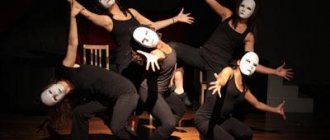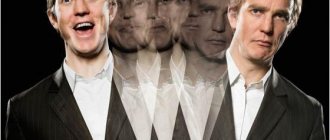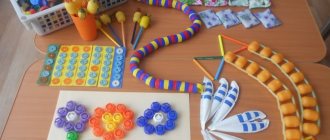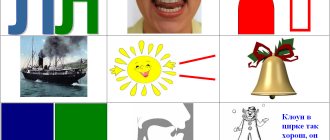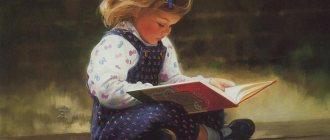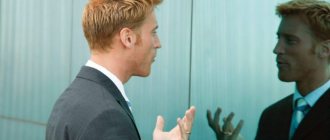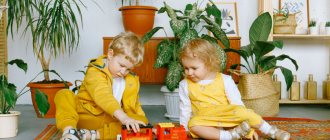Developed facial expressions are a useful quality not only for a theater artist, but also for any person who, due to duty or hobby, often has to perform in public. Mimic expressiveness plays no less a role than speech, since it reflects the emotional life of the artist during the performance and emphasizes the meaning put into the words.
In everyday life, facial expressions are a means of non-verbal communication between people: it is through them that we understand what emotions a person experiences before he begins to speak. The instant and uncontrollable facial reaction of the facial muscles to any event makes facial expressions the most accurate indicator of a person’s mood and his attitude towards something. However, future artists often require additional development of facial expressions.
“The face is the mirror of the soul.” Cicero
If in life facial expressions are our constant companion, then in imitation of life, which is almost any public performance, the absence or lack of facial expressions is the first sign of falsehood.
Imagine Romeo declaring his love with a straight face, or Hamlet during his famous monologue “To be or not to be” with a facial expression a la “Semyon Altov”. Any tragedy with such a game is doomed to turn into a comedy, and vice versa - a comedy risks becoming tragically boring. That is why the facial expressions of actors require development, and this is given the same great attention as the development of correct speech.
Exercises to develop facial expressions
Exercises to develop facial expressions and oral praxis are especially important for actors. These include any exercises on the mobility and interaction of facial muscles, especially those that we use least often in everyday life. In the simplest version, this is an ordinary grimace or alternation of strong tension in the facial muscles followed by complete relaxation.
Standing apart are exercises for the isolated use of any specific group of facial muscles, separately from all the others. Logorhythmic acting exercises for the development of facial expressions and gestures significantly increase the possibilities of facial expression.
- Frown deeply, and then sharply relax your eyebrows and forehead. Make sure that the lower half of your face does not move or is tense.
- Raise your eyebrows as much as possible and round your eyes while keeping the lower half of your face motionless. Relax.
- Stretch your closed lips into a long smile. The upper half of the face should remain motionless. Relax.
- Stretch your mouth in a smile, showing your teeth and articulating the sound Y.
The upper part of the face is motionless . Relax. - Combine exercises 2 and 4 (raise your eyebrows and smile). Relax.
- Stretch your chin forward, trying to keep your entire face still, including your lips. Relax.
- Lower your lower jaw as much as possible, opening your mouth and keeping your face still. Be careful when performing this exercise: stop immediately if you feel pain.
- Pull your bowed lips forward and draw 5 wide circles clockwise and back.
- Starting position as in exercise 8. Draw a figure eight with your lips 5 times in one direction and 5 times in the other.
Your psychologist. The work of a psychologist at school.
"FAMILES AND GESTURES" These games are necessary for the development of paralinguistic (extralinguistic) means of communication, as well as for the development of free, relaxed communication. Options: a) everyone shows two opposite states only with the help of their hands, for example: anger and pleasure, sadness and joy, fatigue and vigor, tension and looseness, etc.; b) the same thing only with the help of facial expressions (without gestures); 6) the same with the help of facial expressions and gestures; d) everyone is divided into pairs. Each pair takes turns doing the following in front of the whole group. One member of the pair receives a task in the form of a note with the text: “rearrange the furniture in the classroom”, “erase from the board and write a new text”, “leave the class and bring water in a glass”, etc. The person receiving the note must convey it using facial expressions and gestures-text to the partner, The second must complete the task. The group compares what was written in the note with what was sent and completed.“SEEING OTHERS” These are games for paying attention to each other. Their options: a) one sits with his back to the audience. He must describe in detail the appearance of someone present - details of the costume, hairstyle, shoes, etc.; b) one of the participants is called. The whole group together must reproduce the sequence of his behavior: gestures, actions, statements from the very beginning of the lesson until this moment (for example, in the last half hour). “THE INFLUENCE OF GROUP MOOD” The purpose of this exercise is to demonstrate the role of a supportive atmosphere in creating the mood of the participants. Two are tasked with coming up with two sketches with objects, for example, one with a “diplomat” (the “diplomat” can be imagined in the form of a sketchbook, a mirror, a picture that needs to be attached to the wall, etc.), the second with a ruler (a ruler can be imagine it as a pointer, cane, knife, etc.). First you should play sketches with objects. While the two are preparing outside the classroom door, the presenter negotiates with the audience about the group reaction. For example, the first sketch of the first performer is received approvingly (smiles, friendly glances, interest on faces), the second sketch is met coldly (indifferent faces, boring eyes). Replicas are not recommended. For the second one, let's say it's the other way around. Then both performers talk about their feelings and evaluate the sketches. As a rule, an étude performed in a situation of “indifference” is rated lower by the author himself than an étude performed in a situation of “interest.” After this, the essence of the “conspiracy” is revealed to them and the problem of “psychological support” is discussed with the entire audience. “CONSISTENCY OF THOUGHTS” This is an exercise in the ability to tune in to each other, to be fully involved in the situation. Two partners come out, the first stands two or three meters from the second, with his back to him, so that the second is looking at the back of his head. The second partner’s task is to give a mental order to look back. The first knows about the task dearly, but does not know when the order will follow. Everyone’s task is to be free and ready to feel their partner with their whole being. So that the audience knows when an order is sent, the second partner raises his hand at this moment. “HAND CHAIN” This exercise is recommended to be carried out at the end of the training, so that the participants once again feel each other and demonstrate the ability to perceive each other. All participants sit down. circle. They place their hands on their knees, then their right hand on the neighbor’s hand. Then, for 5-10 minutes, all members of the group are immersed in the perception of the hands of their neighbors on the right and left, trying to determine: what kind of hand is this (tense, relaxed, kind, etc.), what kind of person do I feel behind this hand, what does he mean to me? conveys how it affects me, etc. Then all participants in a circle share their feelings and impressions. In nonverbal communication, a person’s perception characteristics play an important role. Each has its own dominant channels of information: visual (remembers visual images better), auditory (reproduces information better), kinesthetic (more sensitive to touch, placement in space, etc.). A number of exercises are proposed to identify and activate these channels. “IDENTIFYING FEATURES OF PERCEPTION using words” The presenter offers any reproduction for description (oral or written): genre scene, landscape, portrait. When determining the characteristics of perception, it is necessary to take into account the verbs, adjectives and adverbs used, since each has its own “code” and “own language”. For example, visual perception is characterized by words: look out, show, look closely, small, wide, dim, shine, sparkle, etc.; for the auditory: comment, discuss, sonorous, muffled, rustle, melodious, etc.; for kinesthetic: to achieve, feel, tremble, sluggish, tasteless, flabby, vibrate, etc. “IDENTIFYING FEATURES OF PERCEPTION WHEN OBSERVING A POSTURE” The presenter invites one of the group members to tell an incident from his life (happy, sad, funny). Assignment to the main group of participants: identify the leading information channel of the narrator, justify their opinion. Two participants are given a special task, unknown to the main group: to observe the body position and posture of the listeners. After the end of the story, the postures of the narrator and the listeners are discussed. A person with a predominance of the visual sphere will lean back in the chair as much as possible, most likely stretch out his legs and direct his gaze above the horizon line. At this moment he “sees” what they are talking about. A person with auditory perceptions will tilt his head to his shoulder (the “talking on the phone” pose); he seems to be “listening” to his thoughts and, perhaps, conducting a dialogue with you, arguing or objecting. A person with a kinesthetic dominant will lower his shoulders, bend over the table or put his head on crossed arms, lower his eyes, immersed in the sensations that your story gives rise to in him. At the same time, he can twist the pen, fiddle with the paper, or draw something. “LABYRINTH” The exercise consists of five stages. First stage. Three participants, located in the center of the site, are given the task: to walk through an imaginary labyrinth with their eyes closed. The group observes the physical condition (freedom of movement, muscle tightness, position of the head, arms, fussiness, etc.). After 1-2 minutes of “wandering”, you are asked to describe “your” labyrinth. The initial description is very short: one or two sentences, most often it is a fixation of place. For example: “it was a dark, damp dungeon”, “this is a glass labyrinth”, “this is the corridor of a spaceship”. The group may note tightness in the muscles of the shoulder girdle, arms, and pelvis. Second phase. The same participants are asked to examine the maze while walking through it (the task is performed with their eyes closed). When describing the labyrinth, the group makes sure that the describers do not stray into describing sounds and sensations. For example: a) “It was a glass labyrinth, very transparent, sparkling so much that it hurt my eyes (the group should notice the “kinesthetic” word “hurt” and correct), I see sparks of the sun on the walls. These walls are very high, and the corridors are long...”; b) “It was a corridor of a spaceship with blue walls and light from somewhere below. I heard (the group stops). The light is very beautiful, there are a lot of colorful lights on the remote control…”; c) “This is a dark dungeon with gray stone walls. I had a small candle in my hands, from which there was almost no light. I saw water flowing down the walls...” After the description, the group discusses the physical condition of the participants. A high head and freer arm movements will likely be noted. Third stage. It is suggested to walk through the labyrinth and “hear” the maximum number of sounds. When describing sounds, the group makes sure that participants do not get confused by pictures and sensations. For example: a) “...the walls in this labyrinth rang like glass in a sideboard when a truck passes by”; b) “...there was some special, loud silence there. All the devices worked silently, the special coating muffled the sound of footsteps, and yet I felt (the group stops), I heard quiet breathing behind me...” In the group’s description of the physical condition of the participants, the head will be shifted or tilted towards the shoulder, the hands will be more motionless than in the first case, and there may be a cautious gait. Fourth stage. You need to realize what you feel while walking through the labyrinth (temperature, humidity, smell, etc.): a) “... it was a very hot labyrinth, the sun was so hot that I was melting. And the walls were cold. I really wanted to get out, but I couldn’t find a way out. I wanted to break the walls..."; b) “...I felt the breath of another person behind my back and I felt very calm that I was not alone. The walls were soft and the floor was springy. In general, it was a very convenient corridor. I felt comfortable"; c) “...I was damp and cold, I stumbled and fell on sharp stones - it was very painful. I really wanted warm light and someone to be near.” The group will notice that in this case the movements were more free, the face was lowered, the step was light. Fifth stage. The last passage through the labyrinth with the task of seeing, hearing, feeling. After this, a complete description is given, which is compared with the original one. The changes that occurred in the physical condition of the participants are analyzed. In conclusion, the floor is given to the subjects to reflect on their condition, what hindered and helped during the exercise, etc.
“SENSE ORGANS” Participants are asked to divide into three groups: 1) those who (as it seems to them) remember pictures and images well, that is, are visual; 2) those who (as it seems to them) remember sounds well, that is, are auditory; 3) those who (as it seems to them) remember feelings and sensations well, that is, they are kinesthetic. The first group is given the task of coming up with and preparing to reproduce several silent movie scenes. The second group should come up with and prepare to reproduce a “broken transistor” with snippets of conversations, sounds, and noises. The third group must come up with a set of touches (pat, stroke, pinch, blow, kiss, etc.). When the groups are ready, call one volunteer from each. Place them on three chairs with their backs to each other in the center. Instructions for those sitting in can only hear, “eyes” - only see, “feelings” - only feel. Thus, we changed their perception systems, activating the one that is not sufficiently developed for them. Then the participants of all three groups simultaneously perform all their actions, that is, they show a “silent movie,” a broken transistor sounds,” and all three receive a complex of “feelings” from the third group. After this, the “person” (his “eyes”, “ears”, “feelings”) is asked the question: what did you notice? As a rule, at first there is a mixed perception and description: “ears” can describe what they saw, and “eyes” what they heard. This should not be allowed. It is necessary to use leading questions to lead to an understanding of the confusion and complexity of perception of what our leading information channel most often does not respond to. It is advisable that all group members take part in this exercise. After repeating these exercises several times, the group members will see and feel how the perception of the world around them will become richer in colors, sounds and sensations. This will allow group members to look inward, think about themselves and the people around them. If for teenagers games of a non-verbal nature, on facial expressions, postures, gestures, should be predominant, then for older schoolchildren preference should be given to verbal exercises. Since speech activity attracts special attention to adolescence, and those who do not have sufficient command of it experience dissatisfaction, high school students are always attracted to games that involve them in discussion and teach its techniques.
Games for developing facial expressions for children
With proper organization of activities, games for the development of facial expressions can become a favorite pastime for children. This little hobby has another meaning: it develops emotional expressiveness, since all facial expression games are associated with certain emotions. And of course, the kids are guaranteed a great mood and a lot of positive feelings, because all they have to do is grimace and make funny faces.
As a facial warm-up, you can use a simple listing of emotions, each of which children should depict using facial expressions.
Nesmeyana
A fun game in which children take turns trying to make Princess Nesmeyana laugh, using only gestures and facial expressions. The child playing the role of Nesmeyana must restrain himself as long as possible, and if he does laugh, then the winner takes his place. The game continues until all the children try on the role of Nesmeyana, or until they get tired of it.
The benefits of facial gymnastics
Mimic gymnastics is an integral component of classes for staging or correcting pronunciation for preschoolers. It is especially indicated for children with underdevelopment or delayed speech development, stuttering, dysarthria and other problems with sound reproduction. It is used together with articulation exercises. What does such a tandem give?
- Prepares muscles and nerve endings for corrective work.
- Promotes clarity of diction.
- Improves articulation.
- Relaxes facial muscles.
- Develops control of the muscles of the articulatory organs (tongue, lips, cheeks).
For exercises for facial expressions to be beneficial, it is important to do them regularly, following simple rules.
- The exercises must be performed strictly in front of a mirror (preferably a large one) so that the baby can see the movements in it – both his own and the speech therapist’s.
- During classes, each exercise is focused on one muscle group.
- Facial exercises for children are performed calmly, smoothly, without much effort, but at the same time rhythmically.
At what age can you do facial exercises with kids? From the moment the parents found out that the child needed speech correction. Usually this is 3–4 years, that is, the age of younger preschoolers. By the way, such classes are also actively used in correctional kindergartens. They are carried out in a playful way, which is most interesting for children of this age.
If your child has problems with diction, but does not attend a correctional kindergarten, be sure to enroll him in a good speech therapist and study privately.
Choosing the right gymnastics
Usually, to correct speech, you need to use various types of speech therapy gymnastics. This will allow you to cope with speech disorders as quickly and effectively as possible.
By combining articulatory and facial gymnastics, you can teach your baby to keep his facial and articulatory muscles in good shape, develop their smoothness, mobility and strength. This will improve your pronunciation, fluency and diction.
It is worth consulting with a speech therapist so that he can select a suitable gymnastics complex for your child.
Facial gymnastics classes are suitable for those children who have poor command of the facial muscles and articulatory apparatus. Exercises will help develop facial expressions and improve speech. To achieve the best effect, it is recommended to use facial gymnastics in combination with articulation.
If you liked the article, please share a link to it
